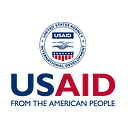Vietnam Celebrates Journey to Domestic Financing of HIV Services
U.S. Ambassador lauds “model of how to transition to local sustainability”
When Vietnam celebrated its 10-year journey toward domestic financing of its HIV response late last year, words from U.S. Ambassador to Vietnam Marc Knapper made clear just how remarkable the country’s achievements have been.
“The United States is working with about 30 countries on HIV/AIDS response, and we really do see Vietnam as a model of how to transition to local sustainability,” Knapper said.
Vietnam’s shift away from donor financing for the HIV program began in 2013 when international funding started gradually decreasing. The Government of Vietnam pursued three key strategies to shore up domestic financing: it mobilized provincial budgets, provided social health insurance (SHI) coverage for HIV services, and promoted contributions from inside the country.
The USAID Local Health System Sustainability Project (LHSS) and its predecessor health systems strengthening projects have worked alongside the government throughout the process.
Vietnam now funds about 52 percent of its HIV/AIDS program through domestic financial resources.
Mobilizing provincial budgets
With LHSS support, the Vietnam Administration of HIV/AIDS Control (VAAC) developed a resource estimation tool to create, monitor, and coordinate provincial sustainable financing plans for the HIV program. As of December 2022, 52 of the country’s 63 provinces had approved sustainable financing plans to end AIDS by 2030. The share of provincial budgets directed toward HIV/AIDS services has steadily risen over the years, from 8 percent in 2013 to 17 percent in 2022.
Providing social health insurance coverage
LHSS and two predecessor projects worked closely with VAAC to integrate 100 percent of HIV treatment facilities into Vietnam’s SHI scheme, making the facilities eligible to provide SHI services. The projects advocated for new policies to subsidize social health insurance premiums and antiretroviral (ARV) drugs for people living with HIV through provincial funding.
The projects also worked alongside VAAC, Vietnam Social Security, and the National Centralized Drug Procurement Center to facilitate centralized procurement of ARV drugs using the social health insurance fund. In 2019, the first SHI-funded ARV drugs were dispensed to HIV patients. Currently, more than 150,000 HIV patients –90 percent of those on ARV treatment — have used SHI-funded ARV drugs.
Next, LHSS successfully advocated for the inclusion of state-of-the-art TLD drugs on the SHI drug list, and in 2021 provided technical assistance as the National Centralized Drug Procurement Center procured TLD and TLE 400 through a first-ever price negotiation process.
Today, 95 percent of people living with HIV currently hold SHI cards — twice as many as five years ago. The SHI fund has paid an average of $16.8 million per year for HIV/AIDS services, including an average of $8.4 million per year for ARV drugs.
Promoting contributions
Another solution to sustainably finance Vietnam’s HIV response is to mobilize contributions from the private sector, community-based social enterprises, and the community of people living with HIV.
Since 2021, LHSS has collaborated with other USAID projects and development partners to support the VAAC in advancing social contracting. LHSS developed a costing framework and completed the costing of four selected HIV services for a social contracting pilot in nine provinces. If the pilot is successful and the legal framework is completed, social organizations will have more opportunities to contribute to the HIV/AIDS program under the national budget — another step towards the long-term sustainability of the program.
Thanks to these multi-year strategies, Vietnam is currently able to fund approximately 52 percent of its HIV/AIDS program through domestic financial resources. With time, advocates hope that key HIV prevention services can also be covered through diversified domestic resources.
LHSS will continue to strengthen the Ministry of Health’s capacity to effectively and efficiently manage, allocate, and use the various financial resources. The project will also continue working with the government to strengthen public financial management systems for public health, including HIV, and achieve greater efficiencies in SHI.
Vietnam’s successes along its domestic financing journey are captured in this celebratory video.
